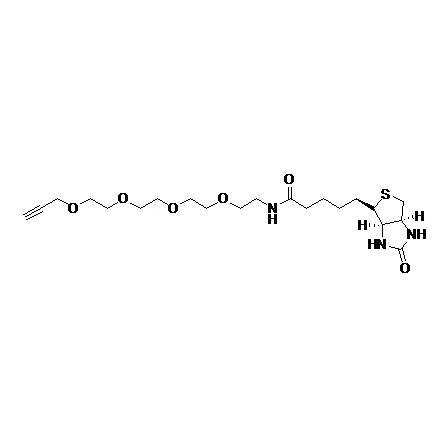Biotin Alkyne
Biotin alkyne reacts with azide to form 1,2,3-triazole by copper(I) catalyzed 1,3-dipolar Huisgen cycloaddition.
This product is available by special order only.
Please fill in the inquiry form and we will contact you shortly.
Please fill in the inquiry form and we will contact you shortly.
Wishlist updated! View wishlist
Product Description
Biotin alkyne reacts with azide to form 1,2,3-triazole by copper(I) catalyzed 1,3-dipolar Huisgen cycloaddition. It can also be used as a monomer to copolymerize with other monomers to form biotin labeled polymers.
You may also like…
Biotin Alkyne
Biotin alkyne reacts with azide to form 1,2,3-triazole by copper(I) catalyzed 1,3-dipolar Huisgen cycloaddition.
Biotin Monoclonal Mouse Antibody (3D6.6)
Monoclonal mouse anti-biotin antibody labeled with our superior CF® Dyes.
CF® Dye & Biotin SE Protein Labeling Kits
Kits for succinimidyl ester labeling antibodies or other proteins with Biotium's next-generation CF® dyes or biotin. 3 x 1 mg labeling reactions per kit.
CF® Dye Azide
CF® Dyes with an azide group. Can be used to label or detect alkyne, BCN or cyclooctyne-containing molecules by fluorescence spectroscopy, microscopy or flow cytometry following copper-catalyzed azide-alkyne cycloaddition.
CF® Dye Biotin
Potential applications of Biotin-CF® Dye include detection of biotin binding sites and the degree of biotinylation of proteins, and for the measurement of avidin and streptavidin in crude biological samples. In addition, biotin-CF® Dye can be used as a polar tracer by microinjection to study the morphology of cells.
Streptavidin Conjugates
A high quality biotin-binding protein conjugated to Biotium's signature bright and photostable fluorescent CF® dyes, and a selection of other labels.


